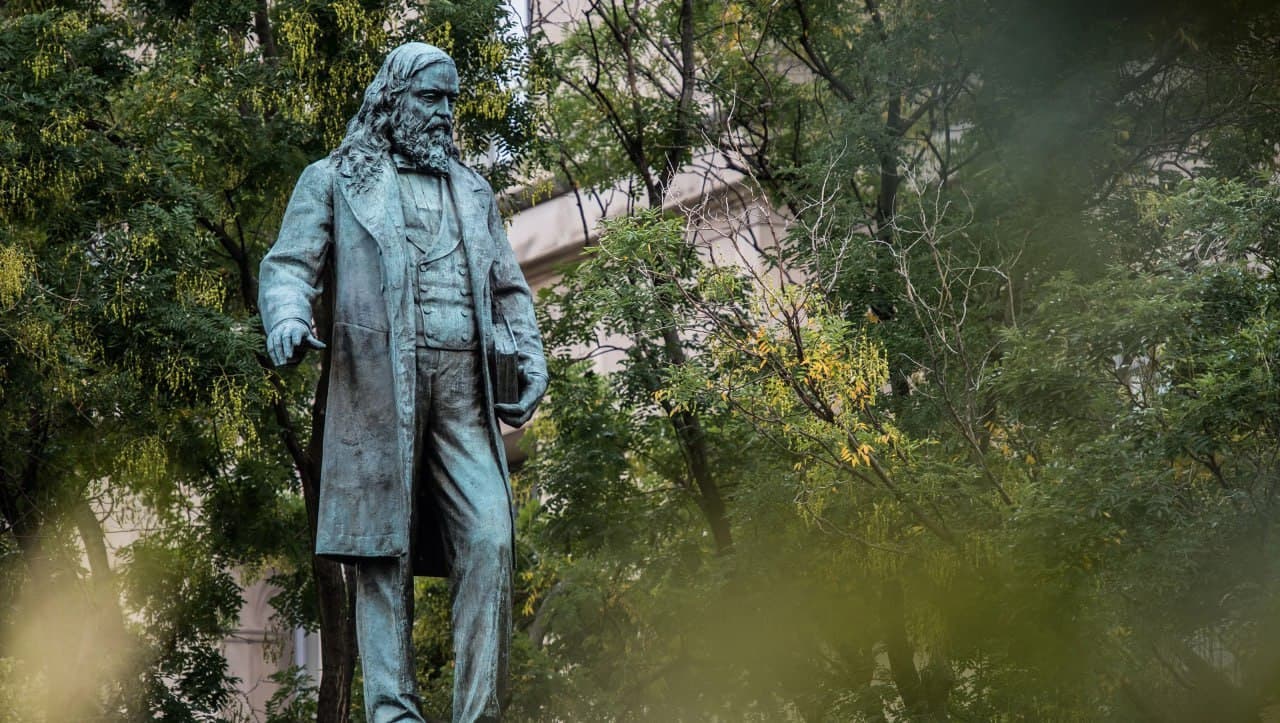National Park Service to Reinstate Controversial Albert Pike Statue by 2025, Sparking Renewed Debate
The National Park Service (NPS) has announced plans to reinstall the statue of Confederate General Albert Pike in Judiciary Square, Washington, D.C. The decision, which is expected to be finalized by October 2025, comes five years after the statue was toppled by rioters amid widespread protests against racial injustice in the summer of 2020. This move has reignited a contentious debate over the legacy of Confederate symbols in the United States, particularly in a city that has been a focal point for discussions on race and history.
Background & Context
Albert Pike, a prominent figure in the 19th century, was not only a Confederate general but also a notable Freemason and a writer. His statue was erected in 1901, commemorating his contributions to the Masonic fraternity and his role in the Civil War. However, Pike"s legacy is marred by his association with the Confederacy, which fought to preserve slavery. The toppling of his statue in June 2020 was part of a broader movement advocating for the removal of Confederate symbols, which many view as relics of a racist past.
The decision to reinstall the statue has prompted strong reactions from various quarters. Representative Eleanor Holmes Norton, a non-voting delegate from D.C., characterized the move as “morally objectionable,” emphasizing that it undermines the ongoing struggle for racial equity and justice in America. This sentiment reflects a significant portion of public opinion that views the resurgence of Confederate symbols as a step backward in the nation"s efforts to confront its historical injustices.
Key Developments
The NPS"s decision is underpinned by recent executive orders aimed at preserving historical monuments, which have gained traction in various states. Supporters of the statue"s reinstatement argue that Pike"s contributions to Freemasonry should not be overlooked and that the statue serves as a historical artifact rather than a celebration of his Confederate affiliations. They contend that removing such statues is a form of historical erasure that fails to acknowledge the complexities of American history.
As the NPS moves forward with the reinstatement, the agency has stated that it will engage with community stakeholders to address concerns and facilitate discussions around the statue’s historical context. This approach aims to strike a balance between historical preservation and the community"s sense of identity and justice.
Broader Impact
The reinstatement of the Albert Pike statue is emblematic of a larger national conversation about how society chooses to remember its past. In recent years, cities across the United States have grappled with similar situations, leading to the removal of various Confederate monuments and other symbols associated with oppression. This ongoing discourse reflects a growing recognition of the need for public spaces to represent a more inclusive narrative of history.
Experts in history and sociology have weighed in on the implications of reinstating such symbols. Dr. Maria Lopez, a historian specializing in American Civil War history, notes that “the conversation surrounding Confederate monuments is not just about the statues themselves but what they represent in the context of race relations today.” The ongoing debate suggests that the reinstatement will likely provoke further discussions about historical memory, identity, and the role public monuments play in shaping community narratives.
What"s Next
As the NPS prepares for the statue"s reinstatement, public engagement efforts will be crucial in addressing the deep divisions this issue has exposed. Community forums and discussions are anticipated to take place in the lead-up to the 2025 installation, providing a platform for diverse voices to be heard. The outcome of these dialogues may significantly influence how the statue is perceived and whether additional measures will be taken to contextualize it within the broader historical narrative.
Furthermore, the decision may set a precedent for other cities grappling with similar controversies surrounding historical monuments. As public sentiment continues to evolve, the NPS"s approach could serve as a model—or a cautionary tale—for how to navigate the complexities of history and memory in public spaces. The discussions surrounding the Pike statue will undoubtedly continue to unfold, reflecting the ongoing struggle for racial equality and justice in America.
For further insights on related developments, see our coverage on recent developments in politics and how they shape public discourse.



![[Video] International orchestras perform virtually for Grand Egyptian Museum opening](/_next/image?url=%2Fapi%2Fimage%2Fthumbnails%2Fthumbnail-1762021908657-vjflzp-thumbnail.jpg&w=3840&q=75)



![[Video] Trump says India has largely stopped buying oil from Russia](/_next/image?url=%2Fapi%2Fimage%2Fthumbnails%2Fthumbnail-1762459850423-ittmp-thumbnail.jpg&w=3840&q=75)
